Risingstarling - Inner Ramblings


More Posts from Risingstarling and Others
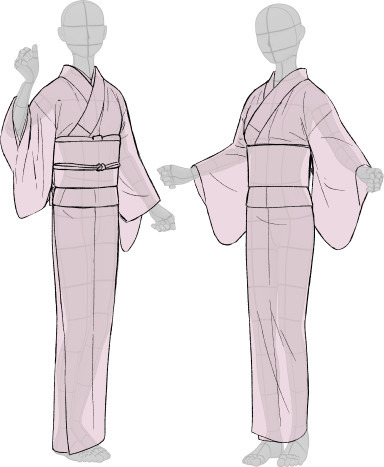
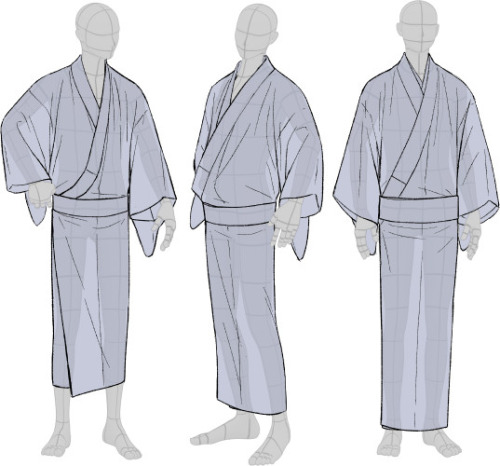
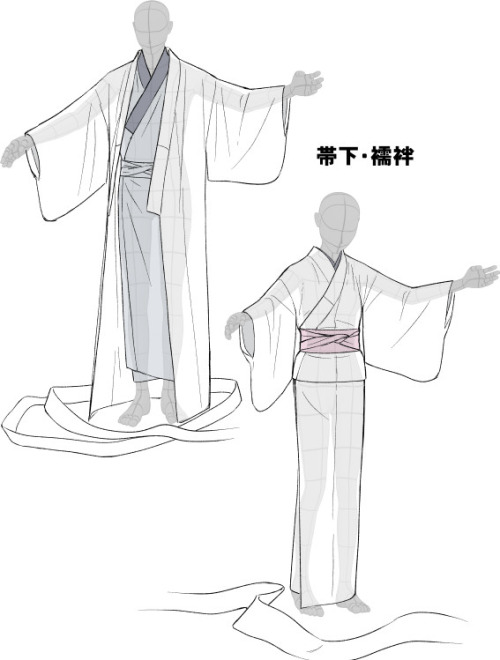
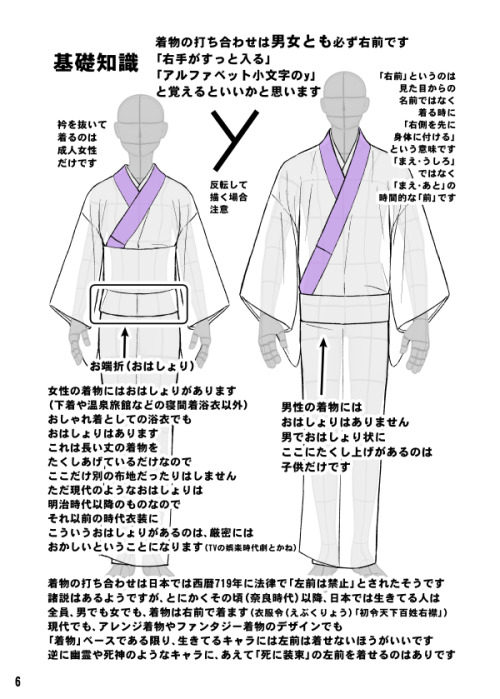
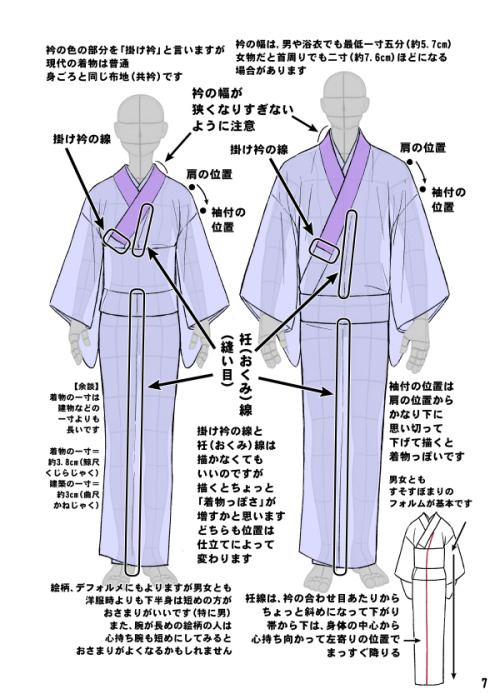
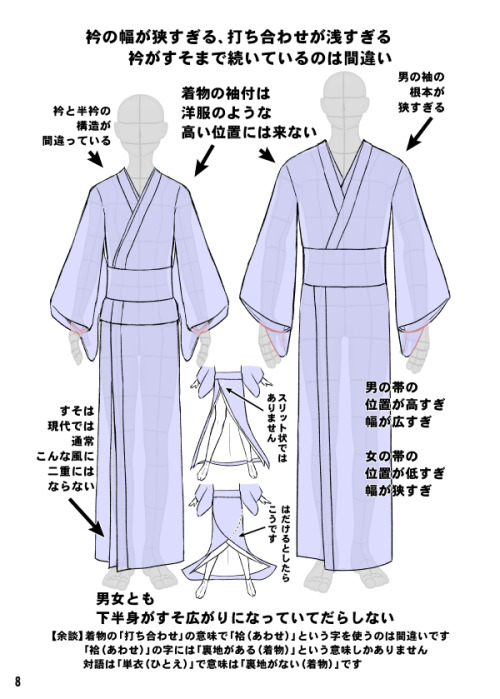
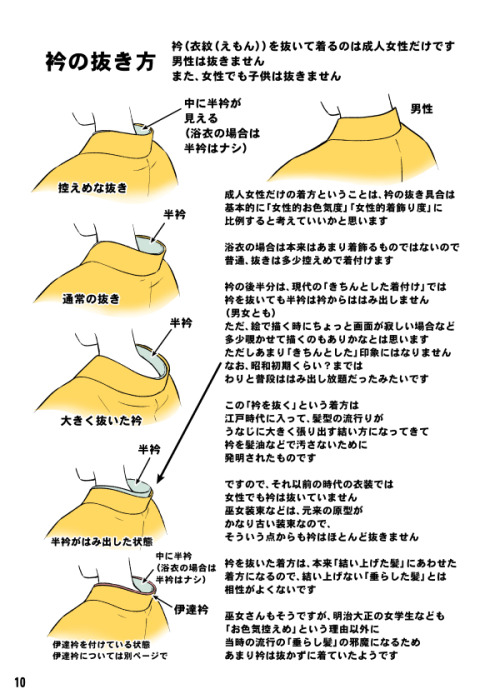

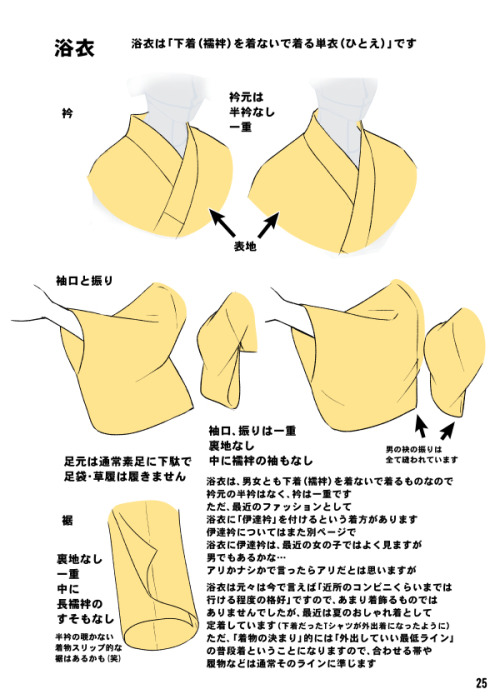
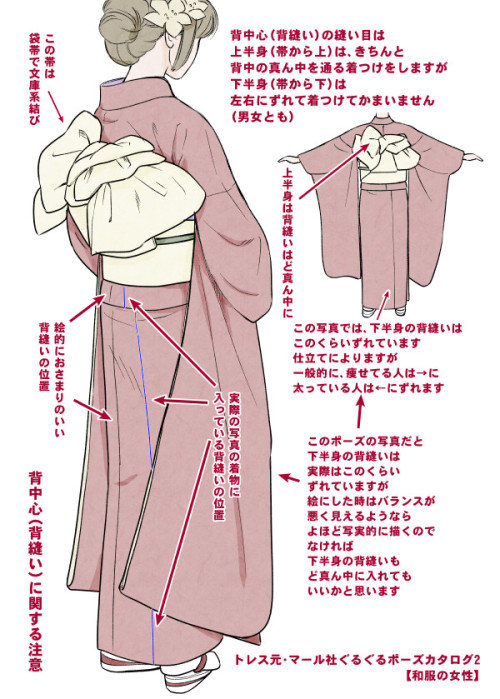
Kimono drawing guide ½, by Kaoruko Maya (tumblr, pixiv, site). Booklet is available in pdf for ¥ 900 here.
Here you can see:
female kimono and yukata (note how the juban underwear peeks when in kimono + how belts differ)
male yukata and kimono (note how the juban underwear peeks when in kimono)
dressing up: male (kimono is not closed yet) and female (kimono closed with datejime belt and ready to put on obi)
differences between female and male kimono once dressed (note how the collars and belts set)
common drawing mistakes (compare with previous picture: shoulders lines are too defined, there is a double hem, collars are narrow, belt is not at the right place etc)
women back collar (the lower the sexier) and men back collar (close to the nape)
back and sleeves differences between men and women
collars and sleeves and view of how kimono drapes around body
Furisode back (long sleeves kimono) and formal furisode obi knot example
Writing Antagonists: (Aka, Your Villains and Bad Guys)
The antagonist is often either one of the most fun things to write, or the most dreaded. But either way, they are a key element of the story, and that cannot be ignored. So, let’s talk about how to make a really great antagonist.
You may have in the past met a writer or teacher or whomever who insists on using the words “protagonist and antagonist” over words like “hero and villain.” Personally, I am not so stingy about it, I feel that I know what you mean anyway so it doesn’t really matter- what there is a legitimate reason as to why you should at least try to think of your villain as your antagonist instead.
And that reason is connotation. Well, denotation too, really- villain and antagonist aren’t completely the same thing, but I’m bringing it down to connotation.
Simply said, when you think of the word “villain”, you’ll think something like “that’s the bad guy in the story.” And when you think of the “antagonist”, you probably think “that’s a fancy word for villain, aka the bad guy in the story.”
But antagonist isn’t just a fancy word. It’s a fancy concept. It means “the guy that opposes the good guy.” That can be on any argument or view. When writing your antagonist is to remember that nothing is black/white, good/bad thinking, and that includes your antagonist.
Let’s map out the steps to making a complex villain- aka, an antagonist.
First, remember that your antagonist (usually) is a person, just like your protagonist. It might help to develop them outside of their intentions first, and put a person to the upcoming reputation.
Background:
Chances are, your antagonist didn’t just rise up out of the ground ready to kill. They came from somewhere. Your readers don’t even have to know everything about your antag’s backstory, but you do, if you want to really understand them. It often holds the key reason as to why your antagonist is where they are. The drive behind anger, revenge, change, or pleasing someone else can come from the events in their background.
Why do they hold the beliefs they hold? Were they raised that way? Were they taught by some mentor figure? Were they cover from a reality they couldn’t bear? Are they trying to please someone, or get revenge on someone who displeased them? The answer should be in their background.
Motives/Beliefs:
Remember, every villain is a hero in their own mind. They believe that what they are doing is necessary, even if they recognize that it is unpleasant. What are they fighting for? Why does it matter to them so much, that they are willing to overlook all the harm they do?
“The Greater Good”: This is one of the more common and understandable villain motives. They believe that what they are doing now is paving the way to a better future. But keep in mind that what your antag views as a “better future” may be very, very different than the average opinion. Maybe a “better future” for them is a genocidal purge or the world ending in flames. Who knows.
That’s not the only type of motive. Be creative. Work with the information you established in your character’s background to find the most reasonable motive.
Tipping Point:
This is going to be related to your background and motive in an interesting way. Think of your antagonist as a character who has already completed their Character Arc and reached a negative end. Look at the points of change on the character arc- the ones that push your character farther down their path. What are those events? Those are the tipping points that prompted your character towards becoming they way they are now- those key moments where your character had a choice, and they chose to become bitter, hateful, vengeful, cold, or other negative things.
These could be the deaths of loved ones, the promptings of a mentor, or a moment of injustice that made them realize that the world isn’t always kind.
Personality/Actions:
This is the part where you develop them outside of their intentions. How do they behave?
It’s tempting to just say that your villain is a villain because they torture and kill people. But those are not the only things that make a villain a scary or serious threat. Some characters might jump to violence easier than others. Some might be more into psychological torment. Some might actually seem really charming or persuasive, which is frightening in it’s own way- they might actually be tricky enough to confuse you into making bad decisions on your own. Think about your character’s background again. What makes the most sense for them as a person?
Presentation:
This is how your antagonist comes across to others. Keep in mind that your reader and your other characters don’t know your antagonist like you do. How does this person present to the world?
-Are they open to discussion/negotiation?
-Are they open about their intentions?
-How quick are they to violence?
-What are their methods of war?
-When you meet them, are they charismatic, quiet, charming, vulgar? Do they have a sense of humor, or are they stoic?
-Do they seem to enjoy what they are doing, or do they express regrets even as they do it?
Moral Complexity:
What are they willing to do to achieve their goals? Do they have weaknesses in their personal lives?
1. Do they have noble ends behind their controversial means?
2. Is there a line even they won’t cross?
3. Do they have someone/something that they care about?
4. Do they prefer to do the killing/torturing etc themselves or do they just give the order?
Remember that if your antagonist does have any of these moral weaknesses, they are not going to want to show it. One has to keep up intimidating appearances, after all.
Speaking of appearances…
Appearance:
This part is here to tell you what not to do. There are certain appearances that are getting really old with villains.
1. Dressing in all black. Why do they even do that? It’s time to stop associating black with “bad” and white with “good”. It just isn’t like that, so stop making villains all dark and stuff.
2. Scars. I think scars are pretty cool, don’t get me wrong. But if there is no relevant reason for it to be there, don’t talk about it all the time. That goes for all characters, not just villains. Like the color black, scars are not just a villain thing. Everyone has them. Don’t associate them with “bad.”
3. Sexy. I get the idea that making a villain attractive makes them harder to hate, but that can be kind of a cop out of actual complexity. Again, if there is no legitimate reason to make your villain sexy, then don’t. It’s not necessary.
4. Ugly. I hesitate to call any traits inherently ugly, but if you’re striving to make your character unpleasant looking just because they’re bad, then once again, you are associating feature=evil, which is not creative at best and seriously socially harmful at worst.
Basically, your villains should be just as diverse as anyone else. You don’t need stereotypes to make them scary. Sometimes it’s scarier than anything else to just have an average person. It sort of adds to the idea that anyone could be a villain. And that’s pretty frightening.
Key Point:
- Complicate your villains. They’re not just Evil McEvilpants.
That’s it for now, but like anything else in writing, antagonists have a lot of possibility and exceptions. But that was your basic rundown on the things to consider when making a complicated antagonist.
~Penemue
How to Write Successful Dialogue
@albino-troll-ninja asked:
Got any feedback/advice/links for someone who wants to make lengthy, relatively action-less dialogues between characters more than just “‘Loren ipsum,’ he said.” “'Ipsum lorem’, she replied.” for forty paragraphs?
No problem! I love dialogue, so I’m happy to be of assistance in this department.
Here are my personal rules of thumb:
1. Allow the dialogue to show the character’s personality.
If you really think about your conversations, it can be telling exactly how much of someone’s personality can shine through when they speak.
Allow your character’s persona, values, and disposition to spill over when they speak, and it will make for a significantly more interesting read for you and your reader.
For example: let’s take a look at a mundane exchange, and see how it can be spruced up by injecting it with a good dose of personality.
Exhibit A)
“How was your day, by the way?” asked Oscar, pouring himself a drink.
“Not too bad,” replied Byron. “Cloudy, but warm. Not too many people.”
“That’s nice.”
Exhibit B)
“How was your day, by the way?” asked Oscar, pouring himself a drink.
“Ugh. Not too bad,” groaned Byron, draping himself on the couch. “Warm, but dreary. Gray clouds as far as the eye could see. Not anyone worth mentioning out this time of year.” A pause. “Well, except me, of course.”
“Hmmph,” said Oscar, glancing over his shoulder. “If it were me, I wouldn’t want it any other way.”
Isn’t that better? Already, the audience will feel as though they’ve gotten to know these characters.
This works for longer dialogue, too: allow the character’s personal beliefs, life philosophy, and generally disposition to dictate how they talk, and your readers will thank you.
Of course, this example is also good for giving the reader a general sense of what the characters’ relationship is like. Which brings me to my next point:
2. Allow the dialogue to show the character’s relationship.
Everyone is a slightly different person depending on who they’re around. Dynamic is an important thing to master, and when you nail it between two characters, sparks can fly.
Work out which character assumes more of the Straight Man role, and which is quicker to go for lowbrow humor. Think of who’s the more analytical of the two and who’s the more impulse driven. Who would be the “bad cop” if the situation called for it.
Then, allow for this to show in your dialogue, and it will immediately become infinitely more entertaining.
Example:
“Alright,” said Fogg, examining the map before him. “Thus far, we’ve worked out how we’re going to get in through the ventilation system, and meet up in the office above the volt. Then, we’re cleared to start drilling.”
Passepartout grinned. “That’s what she said.”
“Oh, for the love of God – REALLY, Jean. Really!? We are PLANNING a goddamn bank robbery!”
Some more questions about dynamic to ask yourself before writing dialogue:
Who is more likely to talk and who is more likely to listen?
Who would talk with their mouth full of food and who would politely wait to swallow?
Is their relationship fraternal/sororal? If so, who would be the “little sibling?”
Is one of them a bit of a mother/father figure to the other?
Who more frequently gets irritated with who?
Who has the more understated sense of humor? Who’s a bit more juvenile?
Who’s better educated? Does it show when they speak?
Who’s a bit more pretentious/full of themselves?
Who interrupts more?
Who swears more?
This can also be a valuable tool to cluing your reader in on who the characters are as people:
3. Think about what this dialogue can tell the reader.
It’s better to fill the reader in more gradually than to waist your valuable first chapter on needless exposition, and dialogue is a great way to do it.
Think about what your characters are saying, and think about ways in which you can “sneak in” details about their past, their families, and where they came from into the discussion.
For example, you could say:
Tuckerfield was a happy-go-lucky Southern guy with domineering parents,
and bore everyone to death.
Or you could have him say:
“Sheesh. All this sneakin’ around in the woods late at night reminds me of being back in Kansas. Good times, man, good times.” There was a pause, before he added, “‘Course, it wasn’t nearly so fun when I came home late for curfew and had to sleep on the front step, but y’know. Life happens.”
Isn’t that much better than the omnipresent monotone?
Dialogue is also a great way to fill in potential plot holes early on, by having your characters talk them out and explain them.
Moreover, dialogue can also be used to foreshadow, offer relevant hints about the climax, or provide information necessary for the resolution.
So use it wisely!
4. Sprinkle in mini-actions throughout.
Even in actionless dialogue, no one actually does nothing. In my case, for example, I stim a lot. I play with my hair. I play with eating utensils. It’s probably very annoying for those around me, but you get the point.
Less fidget-y folks might not do this as much, but they rarely sit totally still during conversations, either. So occasionally add in these mini-actions, and it will make your characters feel a bit less like disembodied voices or floating heads.
For instance:
Jo leaned back in her chair rolling her stiff neck from sitting still for so long. “…So the way I see it,” she continued. “Even if Pheris Beuller’s Day Off didn’t take place in Cameron’s imagination, Pheris was clearly a sociopath whose behavior shouldn’t be glamorized.”
“Ha. As if.” Avery paused to sip her root beer. “Pheris,” she began, raising an index finger. “Was clearly emblematic of counterculturist movements such as the Beat Generation, and his disregard for the capitalistic dogmas imposed upon younger generations is something to be admired.”
“For Christ’s sake, will you two lighten up?” scoffed Leo, counting out bills for the pizza. “We were talking about which movie we wanted to watch tonight. Jesus.”
5. Remember how people actually speak.
In real life conversations, people don’t speak in paragraphs. Alright, some people might, and this can actually be interesting as the personality aspect of a certain type of character.
But generally speaking, people don’t speak in paragraphs, or as though they’re writing thought-out prose or letters.
In real conversations, people stutter. They laugh at their own jokes, repeat words or phrases, and lose their train of thought.
Naturally, you don’t have to illustrate in your writing exactly how chaotic and mundane human speech can be, as writing would be pretty boring in general if it was strictly limited to miming reality. But it’s good to keep in mind that your characters are talking, not writing in purple prose.
Exhibit A:
“When I was a young boy, my mother and I had a most tumultuous relationship,” said Marcus. “She saw me as a hallmark of her past failures, and took every opportunity to remind me as such.”
Exhibit B:
“My mom, when I was kid, we had what you’d call a sort of tumultuous relationship,” said Marcus. “Nothing I ever did was right for her. She, uh – I think she saw me as sort of a hallmark of her past failures. Took every opportunity to remind me of that.”
Which of these is more organic, more easy to visualize, and more telling of character? Unless the point of this dialogue is to illustrate that Marcus is a gentleman crook of some kind with pristine speaking mannerisms, I’m going to say the latter.
Best of luck, I hope this helps, and happy writing! <3
Bio help
CREATING AN OC
Building Fictional Characters
Creating an Original Character
Fiction Writing: Creating a Character
How to Create a Character
How to Create a Fictional Character From Scratch
WRITING A BIO
Character Creation Form
Character Personality Creator
Writing Tips
Found here. Bio layouts still to come.
Headcanon that the reason the Phantom is so excited when Raoul shows up is that there is no way he had a good comeback to “It’s in your soul that the true distortion lies.”




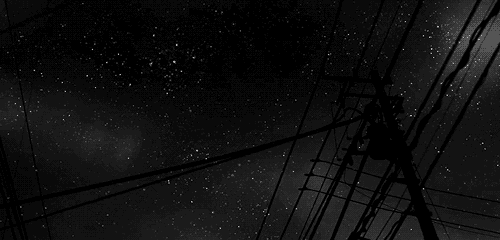
I’ve seen a lot of curious people wanting to dive into classical music but don’t know where to start, so I have written out a list of pieces to listen to depending on mood. I’ve only put out a few, but please add more if you want to. hope this helps y’all out. :)
stereotypical delightful classical music:
battalia a 10 in d major (biber)
brandenburg concerto no. 5
brandenburg concerto no. 3
symphony no. 45 - “farewell” (haydn)
if you need to chill:
rondo alla turca
fur elise
anitra’s dance
in the steppes of central asia (borodin) (added by viola-ology)
if you need to sleep:
moonlight sonata
swan lake
corral nocturne
if you need to wake up:
morning mood
summer (from the four seasons)
buckaroo holiday (if you’ve played this in orch you might end up screaming instead of waking up joyfully)
if you are feeling very proud:
pomp and circumstance
symphony no. 9 (beethoven; this is where ode to joy came from)
1812 overture
symphony no. 5, finale (tchaikovsky) (added by viola-ology)
american (dvořák)
if you feel really excited:
hoedown (copland)
bacchanale
spring (from the four seasons) (be careful, if you listen to this too much you’ll start hating it)
la gazza ladra
death and the maiden (schubert)
if you are angry and you want to take a baseball bat and start hitting a bush:
dance of the knights (from the romeo and juliet suite by prokofiev)
winter, mvt. 1 (from the four seasons)
symphony no. 10 mvt. 2 (shostakovich)
symphony no. 5 (beethoven)
totentanz (liszt)
quartet no. 8, mvt. 2 (shostakovich) (added by viola-ology)
young person’s guide to the orchestra, fugue (britten) (added by iwillsavemyworld)
if you want to cry for a really long time:
fantasia based on russian themes (rimsky-korsakov)
adagio for strings (barber)
violin concerto in e minor (mendelssohn)
aase’s death
andante festivo
if you want to feel like you’re on an adventure:
an american in paris (gershwin)
if you want chills:
danse macabre
russian easter overture
if you want to study:
eine kleine nachtmusik
bolero (ravel)
serenade for strings (elgar)
scheherazade (rimsky-korsakov) (added by viola-ology)
pines of rome, mvt. 4 (resphigi) (added by viola-ology)
if you really want to dance:
capriccio espagnol (rimsky-korsakov)
blue danube
le cid (massenet) (added by viola-ology)
radetzky march
if you want to start bouncing in your chair:
hopak (mussorgsky)
les toreadors (from carmen suite no.1)
if you’re about to pass out and you need energy:
hungarian dance no. 1
hungarian dance no. 5
if you want to hear suspense within music:
firebird
in the hall of the mountain king
ride of the valkyries
night on bald mountain (mussorgsky) (added by viola-ology)
if you want a jazzy/classical feel:
rhapsody in blue
if you want to feel emotional with no explanation:
introduction and rondo capriccioso
unfinished symphony (schubert)
symphony no. 7, allegretto (beethoven) (added by viola-ology)
canon in d (pachelbel)
if you want to sit back and have a nice cup of tea:
st. paul’s suite
concerto for two violins (vivaldi)
l’arlésienne suite
pieces that don’t really have a valid explanation:
symphony no. 40 (mozart)
cello suite no. 1 (bach)
polovtsian dances
enigma variations (elgar) (added by viola-ology)
perpetuum mobile
pieces that just sound really cool:
scherzo tarantelle
dance of the goblins
caprice no. 24 (paganini)
new world symphony, allegro con fuoco (dvorak) (added by viola-ology)
if you feel like listening to concertos all day (I do not recommend doing that):
concerto for two violins (bach)
concerto for two violins (vivaldi)
violin concerto in a minor (vivaldi)
violin concerto (tchaikovsky) (added by iwillsavemyworld)
cello concerto in c (haydn)
piano concerto, mvt. 1 (pierne) (added by iwillsavemyworld)
harp concerto in E-flat major, mvt. 1 (added by iwillsavemyworld)
and if you really just hate classical music in general:
4′33″ (cage)
a lot of these pieces apply in multiple categories, but I sorted them by which I think they match the most. have fun exploring classical music!
also, thank you to viola-ology and iwillsavemyworld for adding on! if you would like to add on your own suggestions, please reblog and add on or message me so I can give you credit for the suggestion!
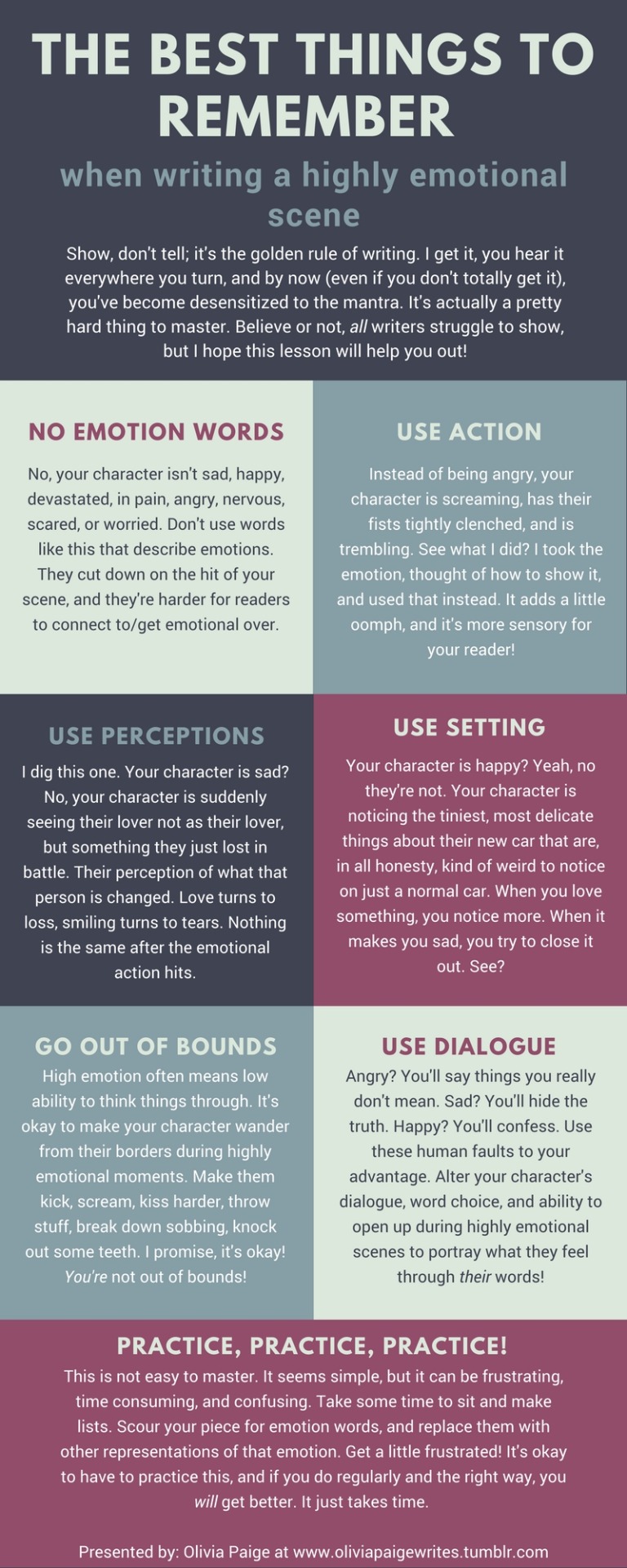
THIS IS AN IMPORTANT ONE! Don’t ignore this in your writing!

Below you will find my Academia FAQ. If you still can’t find something feel free to ask! My Study Tips page should be helpful, as well.
Study Strategies
How do you organize your notes?
How do you take notes in class?
Have any tips of binder organization?
How do you study before tests?
How do you write science papers?
I forgot everything from last semester… What should I do?
How do I deal when there’s so much to do but so little time!?
What is the “blank sheet method”?
How do you study for finals? x and x
Rewriting my notes works for me; how can I do it more effectively?
“How should I study for…?”
How should I study for chemistry?
How should I study for organic chemistry?
How should I study for calculus?
How should I study for [other specific class]?
How should I study to get 5s on my AP exams?
School Supplies
Do you have a basic list of study supplies? x and x
Where did you buy your book stand? | Is it good for heavy textbooks?
Do you buy physical textbooks or eBooks? | Where do you buy them?
What’s the hype with mini Moleskines? | Where can I buy some?
What should I put in the mini Moleskines?
Is there a better alternative to Moleskine notebooks?
Best books for bio/biochem/chem majors?
What do you use your colored pens for? | What pens do you use for notetaking?
What are your favorite pens?
Where did you get your laptop stand?
What are some good study apps?
Tablets or real notebooks?
Where do you buy your Cornell notebooks? | Are they helpful?
Do Bose Noise-Cancelling Headphones work?
Where is your desk from? & What is on your desk?
What kind of calculator would you recommend?
General College
Should I expect freshman year of college to be a breeze or really difficult?
How can I study more efficiently so I have time for friends and extracurriculars?
My professor doesn’t lecture well; what should I do?
What’s the most challenging part of college?
I have to work a lot to pay for college; any advice?
How do I get into a research lab?
How can I stay on top of studying, extracurriculars, work, and friends? x and x
How many clubs should I participate in?
How should I deal with mental illness in college?
What can I do to stay involved while still being able to maintain a good GPA?
How can I figure out my learning style?
What are the most important things you’ve learned in college?
College Majors and Pre-Career
Any advice for undecided majors? x and x
What kind of classes can I expect as a chem major?
I really love biology and chemistry; is biochem the major for me?
How do I choose between biochemistry and chemistry as a major?
I want to be a neurosurgeon; what major should I choose?
Why did you switch from pre-MD/PhD to pre-PhD?
Why did you decide against medical school?
My advisor said I don’t have the mind for chemistry. Should I switch majors?
I’m not that great at math… Should I give up on science?
What are the pros and cons of a double major?
GPAs and Grades
How do I recover from a bad exam grade?
How do I recover from a bad semester?
Can I get As without pulling all-nighters?
I’ve been giving 200% but only getting Bs; how can I fix this?
I’m average or low GPA; am I taking the right path?
Is my high school GPA a good indicator for university and career performance?
Studyblr
What studyblrs would you recommend? x and x
How can I become a successful studyblr?
Any tips for writing original posts?
I took a second the do the proper accents and that is so true 😂

(Via: Instagram.com) 😂👏👌 . Which way do you say it? . I say it like both British and American . . . . . . #louistomlinson #lou #boobear #niallhoran #nialler #harrystyles #hazza #liampayne #leeyum #daddydirectioner #zaynmalik #djmalik #onedirection #upallnight #takemehome #whereweare #thisisus #directionerforever #directioner #larry #lilo #lirry #zarry #zouis #ziall #ziam #nouis #narry #niam - See One Direction Live! http://ow.ly/r72Te
-
 awesome-normal-heroes reblogged this · 6 months ago
awesome-normal-heroes reblogged this · 6 months ago -
 crazy-crystals-101 liked this · 6 months ago
crazy-crystals-101 liked this · 6 months ago -
 tdhppjpurple liked this · 1 year ago
tdhppjpurple liked this · 1 year ago -
 ffiamgoku liked this · 2 years ago
ffiamgoku liked this · 2 years ago -
 cloudbustingss liked this · 2 years ago
cloudbustingss liked this · 2 years ago -
 veloxcorde reblogged this · 3 years ago
veloxcorde reblogged this · 3 years ago -
 lunajadelyn liked this · 3 years ago
lunajadelyn liked this · 3 years ago -
 khancrackers liked this · 3 years ago
khancrackers liked this · 3 years ago -
 phoenix-before-the-flame liked this · 4 years ago
phoenix-before-the-flame liked this · 4 years ago -
 althearaseri liked this · 4 years ago
althearaseri liked this · 4 years ago -
 vanus liked this · 4 years ago
vanus liked this · 4 years ago -
 ravenbonnefoy reblogged this · 4 years ago
ravenbonnefoy reblogged this · 4 years ago -
 casualfruit liked this · 4 years ago
casualfruit liked this · 4 years ago -
 mlnmo reblogged this · 4 years ago
mlnmo reblogged this · 4 years ago -
 mlnmo liked this · 4 years ago
mlnmo liked this · 4 years ago -
 untamablesouls liked this · 4 years ago
untamablesouls liked this · 4 years ago -
 ariassong reblogged this · 4 years ago
ariassong reblogged this · 4 years ago -
 astro-mario liked this · 4 years ago
astro-mario liked this · 4 years ago -
 gayghostape liked this · 4 years ago
gayghostape liked this · 4 years ago -
 elite-four-aaron reblogged this · 4 years ago
elite-four-aaron reblogged this · 4 years ago -
 snake-worship reblogged this · 4 years ago
snake-worship reblogged this · 4 years ago -
 snake-worship liked this · 4 years ago
snake-worship liked this · 4 years ago -
 kryptonavatar reblogged this · 4 years ago
kryptonavatar reblogged this · 4 years ago -
 demonicchild2 liked this · 4 years ago
demonicchild2 liked this · 4 years ago -
 roosinii reblogged this · 4 years ago
roosinii reblogged this · 4 years ago -
 roosinii liked this · 4 years ago
roosinii liked this · 4 years ago -
 sapphicsam liked this · 4 years ago
sapphicsam liked this · 4 years ago -
 firerainreblogs liked this · 4 years ago
firerainreblogs liked this · 4 years ago -
 luimnigh liked this · 4 years ago
luimnigh liked this · 4 years ago -
 eyeloch liked this · 4 years ago
eyeloch liked this · 4 years ago -
 commandervisor reblogged this · 4 years ago
commandervisor reblogged this · 4 years ago -
 commandervisor liked this · 4 years ago
commandervisor liked this · 4 years ago -
 knight-cross liked this · 4 years ago
knight-cross liked this · 4 years ago -
 blu-mndz45 liked this · 4 years ago
blu-mndz45 liked this · 4 years ago -
 waterfire1848 liked this · 4 years ago
waterfire1848 liked this · 4 years ago -
 delicatefalice liked this · 4 years ago
delicatefalice liked this · 4 years ago
Right now this is just anything that comes to mind since I'm a complete noob at tumblr. I've been hearing about it for years but I never really felt like I had anything to say. Well all that has changed now and I figured I'd see what all the hype about tumlr is really about. Anyway don't take anything I say too seriously for now...I'll probably change it later when I become more comfortable with this website.
168 posts